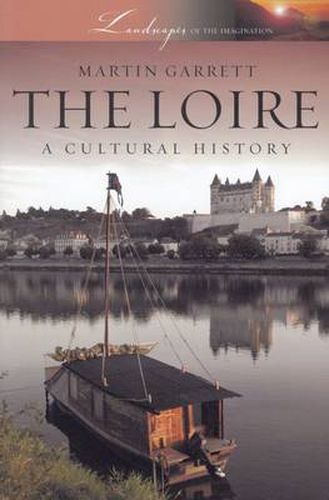Readings Newsletter
Become a Readings Member to make your shopping experience even easier.
Sign in or sign up for free!
You’re not far away from qualifying for FREE standard shipping within Australia
You’ve qualified for FREE standard shipping within Australia
The cart is loading…






Gustave Flaubert called the Loire the most French of French rivers. It is the longest river in France and the most varied in scenery and moods. Beginning as a mountain stream in the Ardeche, it issues, 630 miles later, into the Atlantic beyond the great modern port of St.-Nazaire. Small and rapid at first, the Loire runs through dark volcanic hills; further downstream it becomes the broad, slower river of sandy islands, poplars, and chateaux and of the vibrant cities of Orleans, Blois, Tours, and Nantes (the former capital of Brittany). It is lined with vineyards, forests, medieval fortresses, and flamboyant Renaissance palaces. It is fed by countless tributaries, from rivulets to mighty rivers like the Allier, Cher, and Vienne, each with their own remarkable sights. Martin Garrett follows the Loire’s course through cities and countryside, tracing its dramatic history from the days of feuding warlords and barons to the battles of 1940. Looking at the wide range of literature, art, and architecture created along its banks, he considers works from Du Bellay and Balzac to Virginia Woolf, from Renaissance palace builders to Le Corbusier.
$9.00 standard shipping within Australia
FREE standard shipping within Australia for orders over $100.00
Express & International shipping calculated at checkout
Gustave Flaubert called the Loire the most French of French rivers. It is the longest river in France and the most varied in scenery and moods. Beginning as a mountain stream in the Ardeche, it issues, 630 miles later, into the Atlantic beyond the great modern port of St.-Nazaire. Small and rapid at first, the Loire runs through dark volcanic hills; further downstream it becomes the broad, slower river of sandy islands, poplars, and chateaux and of the vibrant cities of Orleans, Blois, Tours, and Nantes (the former capital of Brittany). It is lined with vineyards, forests, medieval fortresses, and flamboyant Renaissance palaces. It is fed by countless tributaries, from rivulets to mighty rivers like the Allier, Cher, and Vienne, each with their own remarkable sights. Martin Garrett follows the Loire’s course through cities and countryside, tracing its dramatic history from the days of feuding warlords and barons to the battles of 1940. Looking at the wide range of literature, art, and architecture created along its banks, he considers works from Du Bellay and Balzac to Virginia Woolf, from Renaissance palace builders to Le Corbusier.